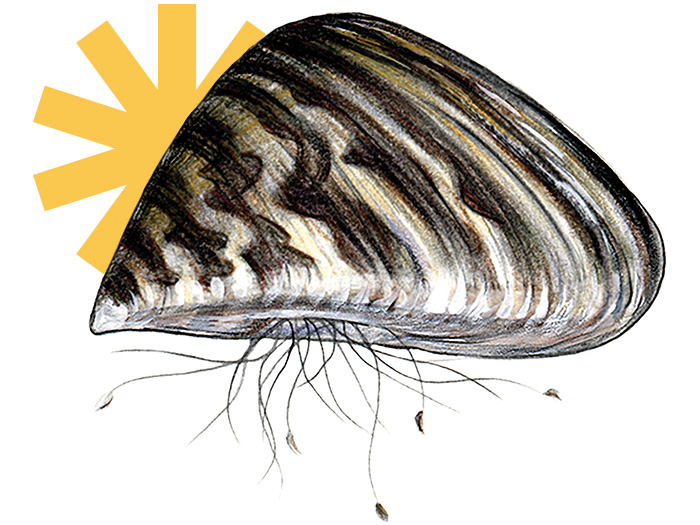Robert McMahon, UTA professor emeritus in biology and expert in freshwater and marine invertebrates, is expanding his research into the local spread of zebra mussels.
Zebra mussels are small bivalve mollusks about the size of a human fingernail, though some can grow to nearly 2 inches. Their invasion of North American water bodies has resulted in billions of dollars being spent in ecological services, human recreation, and in mitigation and control of mussel fouling in potable water, power stations, and industrial raw water facilities.
"A female zebra mussel can produce up to 1 million externally fertilized eggs in a single spawning season that develop into planktonic larvae," says Dr. McMahon. "The larvae are dispersed in water currents and rapidly develop in very high densities after invasion."
McMahon and his team will use monthly samples from three infested Texas lakes—Texoma, Ray Roberts, and Belton—to estimate spring and fall cohort growth rates and life spans of zebra mussels, among many other factors. His team is also taking a closer look at instances when rapid surges of zebra mussel populations have been followed by sharp declines.
"We're focusing on understanding the causes of the zebra mussel population collapses that have occurred in Texas lakes and other warm, southwestern water bodies," McMahon says. "We expect mussel population to decline over time."



